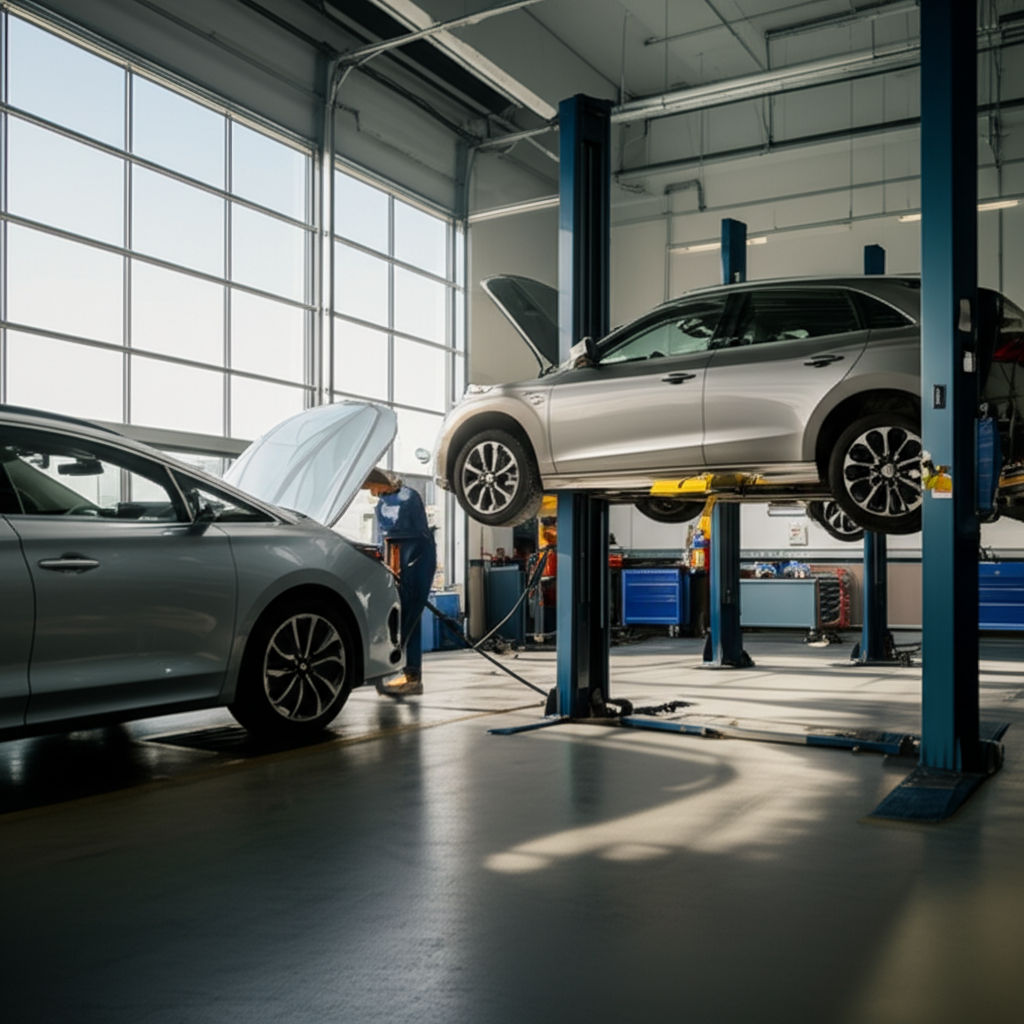How Memory Works: Tips to Improve Teaching
Ellie Moore

Photo: How Memory Works: Tips to Improve Teaching
How Memory Works: Tips to Improve Teaching
Memory is an incredible and intricate part of human cognition, playing a crucial role in how we learn, retain, and recall information. As educators, understanding how memory works can significantly enhance teaching effectiveness. Whether you’re teaching young students, adults, or specialized learners, applying strategies that align with how memory functions can lead to better learning outcomes. In this article, we’ll explore how memory works and share practical tips to help improve teaching and retention in the classroom.
The Science Behind Memory: How Memory Works
Memory is often compared to a vast library where information is stored and retrieved. In reality, it’s far more complex, involving multiple stages and systems working together to encode, store, and retrieve data. Here’s a breakdown of how memory works:
1. Encoding: The First Step in Memory Formation
Encoding is the process of converting information into a format that can be stored in the brain. It happens in response to new experiences, stimuli, or learning activities. When we encounter new information, our brain uses various sensory inputs (sight, sound, touch, etc.) to encode that data. There are different types of encoding:
- Visual encoding: Storing images and visual details.
- Acoustic encoding: Storing sounds or verbal information.
- Semantic encoding: Storing meaning-based information, which is the most effective way to create long-term memories.
To aid the encoding process, repetition and making the information meaningful are critical. This is where teaching strategies that focus on active engagement can play a significant role.
2. Storage: Holding Information for Future Use
Once information is encoded, it needs to be stored. This involves the retention of information over time, and it’s divided into three types of memory systems:
- Sensory memory: The brief retention of sensory input, like a flash of light or sound. It lasts only a fraction of a second.
- Short-term memory (STM): Information is temporarily held for a short period, usually around 20-30 seconds.
- Long-term memory (LTM): A more durable store of information, which can last from hours to an entire lifetime.
For teaching, it’s essential to use strategies that move information from short-term to long-term memory. Techniques like spaced repetition and active recall help strengthen memory retention and improve long-term storage.
3. Retrieval: Accessing Stored Information
Retrieving information from memory involves recalling what has been encoded and stored. The easier it is to retrieve information, the stronger the memory connection. Retrieval can be enhanced through context and cues. For example, recalling a topic during a lecture or study session can trigger related memories, making learning easier and faster.
In a classroom setting, teachers can improve retrieval by encouraging review sessions, creating associations, and prompting students to recall and apply the knowledge they’ve learned.
Tips to Improve Teaching by Enhancing Memory
Now that we understand how memory works, let’s dive into actionable tips to help you, as an educator, enhance learning and improve student memory retention.
1. Use Active Learning Techniques
Active learning involves engaging students in the learning process, rather than passively receiving information. Activities like group discussions, problem-solving, and hands-on experiments can stimulate encoding, making it easier for students to store and retrieve information. These activities engage multiple senses and areas of the brain, which enhances memory.
Examples:
- Think-Pair-Share: Have students think about a question individually, discuss it with a partner, and then share their answers with the class.
- Peer Teaching: Students explain concepts to each other, which helps reinforce their understanding and strengthens memory.
2. Incorporate Spaced Repetition
Spaced repetition is a learning technique where information is reviewed at increasing intervals to reinforce long-term memory. This method is based on the forgetting curve, which shows that information is quickly forgotten if not revisited.
Tip: Use tools like flashcards or quiz apps to implement spaced repetition. Encourage students to revisit key concepts periodically, rather than cramming before exams.
3. Create Meaningful Connections
The more connections students can make to the new information, the more likely it is they will remember it. Encouraging students to relate new knowledge to their personal experiences, existing knowledge, or real-world applications can increase memory retention.
Example: When teaching math, show how algebraic equations can apply to budgeting or shopping, making the concept feel relevant to their daily lives.
4. Provide Clear, Structured Learning Paths
Memory thrives when information is organized in a logical, hierarchical structure. Providing students with a clear outline of what they’ll learn can help them mentally organize the material and retain it better.
Tip: Use visual aids like concept maps, mind maps, or outlines to break complex information into digestible chunks. Make sure the learning journey is predictable, so students can mentally prepare for new material.
5. Enhance Memory Through Retrieval Practice
Retrieval practice involves actively recalling information rather than simply reviewing notes. This can be done through quizzes, discussion prompts, or reflective journaling.
Example: Start every class with a brief quiz or a recap of previous lessons. This “retrieval practice” helps reinforce the neural pathways associated with the material, improving long-term retention.
6. Reduce Cognitive Load
Cognitive load refers to the amount of mental effort required to process information. If the load is too high, students may struggle to retain what they’ve learned. To reduce cognitive load, break down complex concepts into smaller, more manageable parts, and present them one at a time.
Tip: Use simple language, avoid overloading with unnecessary details, and ensure that your teaching materials are clear and concise.
7. Use Multi-Sensory Learning Approaches
Incorporating different sensory inputs (visual, auditory, kinesthetic) into lessons can enhance memory. This activates different parts of the brain, which can help strengthen the learning process.
Example: Combine video, audio, and physical activities (like role-playing or experiments) to teach a single concept. This multi-sensory approach can improve retention for students with different learning styles.
8. Provide Regular Feedback
Feedback is an essential part of learning and memory. Positive feedback reinforces correct answers and actions, while corrective feedback helps students adjust their understanding.
Tip: Provide timely, specific feedback that guides students toward understanding why they got an answer right or wrong, rather than just marking it correct or incorrect.
9. Make Use of Mnemonics
Mnemonics are memory aids that make it easier to remember complex information. Using acronyms, rhymes, or visualization techniques can help students remember facts or sequences.
Example: The acronym "PEMDAS" is a mnemonic used to teach the order of operations in math (Parentheses, Exponents, Multiplication, Division, Addition, Subtraction).
Conclusion: Unlocking the Power of Memory in Teaching
Memory is not just a passive function it’s a dynamic process that plays a vital role in learning. By understanding how memory works and applying strategies to improve memory retention, teachers can create more effective learning environments. Techniques like active learning, spaced repetition, and meaningful connections can significantly boost students' ability to retain and apply knowledge.
As you incorporate these tips into your teaching practice, remember that every learner is unique. By continually experimenting with different strategies and observing what works best for your students, you’ll be able to create an environment where memory and learning thrive.
Frequently Asked Questions
Q1: How long does it take for information to move from short-term memory to long-term memory?
A1: The process can vary. Generally, it takes repeated exposure and practice over days or weeks for information to transfer from short-term to long-term memory.
Q2: What are some quick strategies to improve student memory retention?
A2: Spaced repetition, active recall, and teaching through multi-sensory methods are great ways to improve memory retention quickly.
Q3: How can I reduce cognitive load in my lessons?
A3: Break down complex concepts into smaller chunks, provide visual aids, and avoid overwhelming students with too much information at once.
Finance & Investment
View All
September 3, 2025
Manufactured Home Financing OptionsGo beyond keywords! Discover Expert SEO Content, focusing on Google's E-E-A-T to build trust, authority, and achieve lasting online success.
Ellie Moore

April 23, 2025
American Honda Finance Login HelpElevate your brand with expert SEO content! Go beyond keywords to create valuable, authoritative material that boosts rankings, drives traffic, and builds trust...
Ellie Moore

October 6, 2025
Top Rated Finance Schools WorldwideMaster expert SEO content to boost rankings & engage readers. Discover how E-E-A-T and people-first content drive authority and trust for 2025.
Ellie Moore

April 27, 2025
Financial Financing ExplainedUnlock online authority with expert SEO content. Learn how to build trust, demonstrate expertise, and rank higher by mastering Google's E-E-A-T.
Ellie Moore

June 27, 2025
Automobile Financement Global Car Loan GuideUnlock SEO success! Create expert content that ranks high, drives organic traffic, and builds authority by satisfying both users and search engines.
Ellie Moore

May 21, 2025
HVAC Financing Options That WorkUnlock higher rankings & engage readers with expert SEO content. Learn to create valuable, optimized content that drives traffic & builds authority.
Ellie Moore
Insurance
View AllSecure your future with confidence using Essential Term Life Insurance. This guide helps you find the best policies, navigate quotes, and protect loved ones & b...
Ellie Moore
Discover the world of reinsurance, its purpose, and how it protects insurers against big claims.
Ellie Moore
Unlock the secrets to getting cheap auto insurance fast! Our guide helps you find the best rates and reliable coverage, turning a daunting task into a financial...
Ellie Moore
Save on premiums with usage-based auto insurance. Learn how your driving habits shape coverage and costs!
Ellie Moore
Learn how gig workers can protect themselves with insurance solutions designed for freelance and flexible work.
Ellie Moore
Explore how InsurTech startups are transforming the insurance industry with innovation and cutting-edge solutions.
Ellie Moore
Education
View AllExplore how virtual reality is revolutionizing learning by providing immersive educational experiences. Ready to see VR in action?
Read MoreExplore the benefits of hybrid learning models. Learn how to balance online and face-to-face teaching for a more flexible education experience.
Read MoreUnderstand dyslexia and discover effective ways to support dyslexic students in the classroom. Learn proven strategies to improve learning outcomes.
Read MoreOutdoor learning promotes cognitive and social growth. Explore how nature-based education enhances learning outcomes and student well-being.
Read MoreMOOCs are transforming the landscape of higher education. Learn how massive open online courses are making learning accessible to all.
Read MoreLifelong learning is the new normal! Discover why continuous learning is essential for personal growth, career success, and adapting to change.
Read MorePopular Post 🔥
View All
1
2
3
4
5
6
7
8
9
10
Health






Automotive
View All
September 10, 2025
Island Automotive Local Repairs You Can Trust
Struggling to find reliable auto repair? Discover how to choose a trustworthy "island" car service that prioritizes expertise, transparency, & your safety.

August 19, 2025
How To Use Automotive Wire Connectors Safely
Master automotive wire connectors for safe, reliable, and high-performance vehicle electrical systems. Avoid hazards & ensure peace of mind!

July 23, 2025
Automotive Lawyers You Need For Legal Support
Need an automotive lawyer? Discover when & why expert legal support is crucial for car accidents, lemon law, fraud, and vehicle disputes. Protect your rights!

July 25, 2025
Family Automotive Shops You Can Trust Today
Find a trustworthy auto mechanic! This guide helps you locate reliable car repair shops that prioritize honesty & customer relationships for peace of mind.

July 18, 2025
Leader Automotive Group Settlement Explained Simply
Understand the $20M Leader Automotive Group settlement. Learn how this landmark case addresses deceptive car sales and protects consumer rights.

July 21, 2025
Williams Automotive Care And Service Insights
Ensure a healthier, safer, and longer-lasting vehicle. Learn proactive car care insights from Williams Automotive to prevent costly repairs.

















